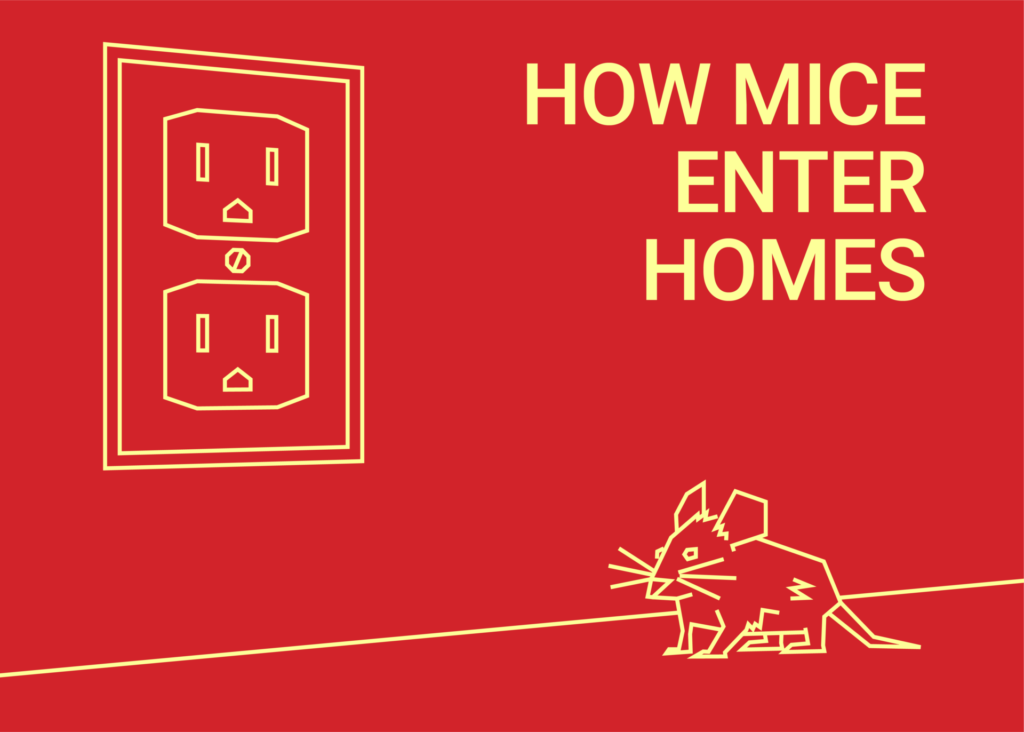Mice are good at sneaking into places you may not expect, and unfortunately, they can cause substantial damage to your home if they go undetected. They can get into basements, pantries and attics with ease due to their small size, acrobatic tendencies and ability to squeeze through tight spaces. Here’s what you need to know about how mice enter homes.

Why Mice Enter Homes
Typically, mice live outside — but like all living things, mice need food, water, and shelter to survive. If they’re not able to meet those basic needs roaming the outdoors, they will make their way inside. There are two primary reasons wild mice migrate indoors:
- They’ve found food. If you aren’t properly storing food in airtight containers, mice may be attracted to goodies in your pantry. Open boxes of cereal, jars of peanut butter, and even packages of pet food can be prime food sources for mice.
- They’ve found shelter. Rodent infestations are more common in the winter months as mice tend to make their way inside to avoid freezing climates. The cold weather drives rodents inside, and when they’re comfortable they will start nesting to raise young.

